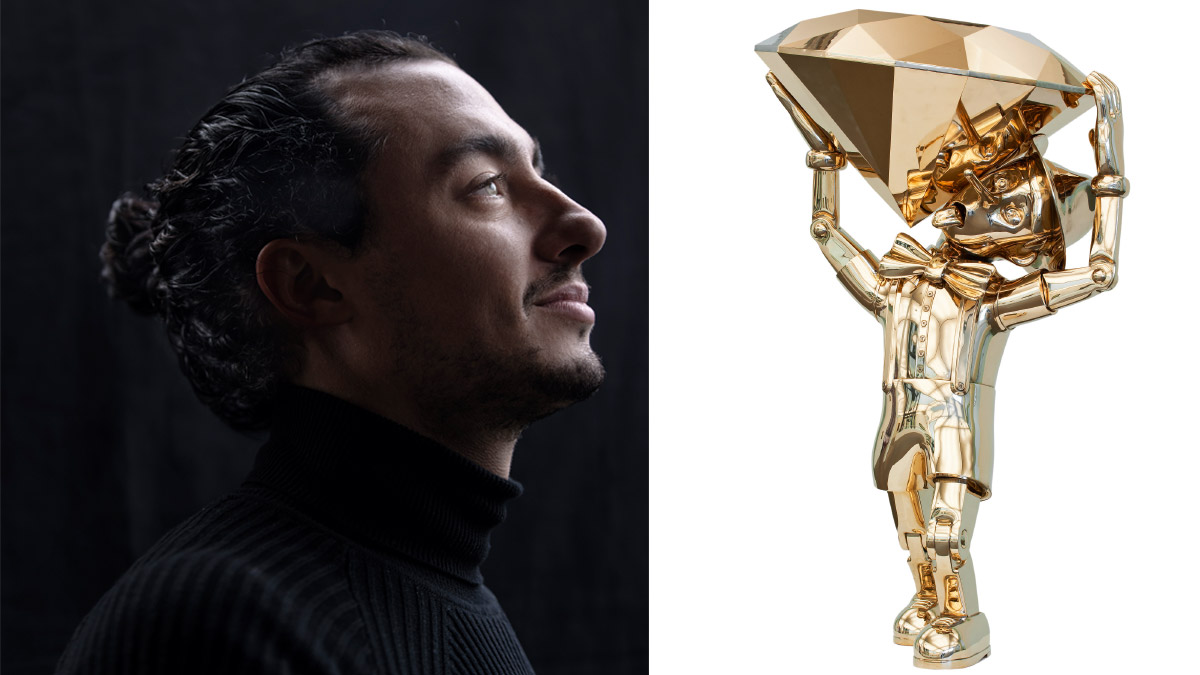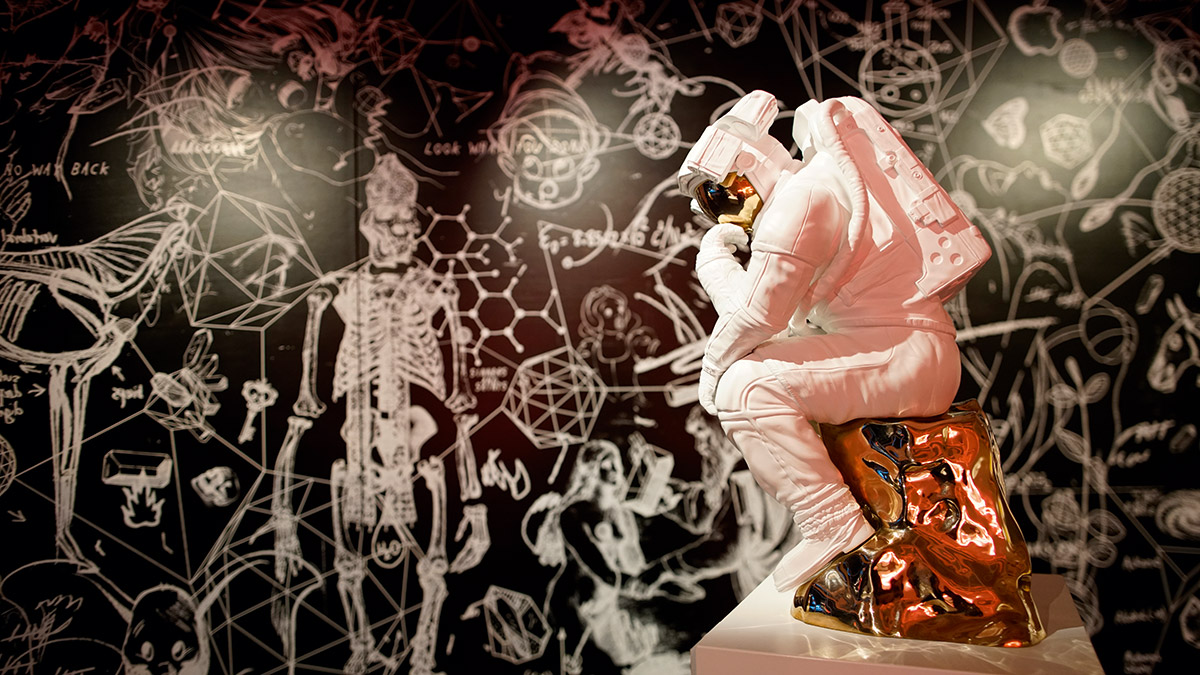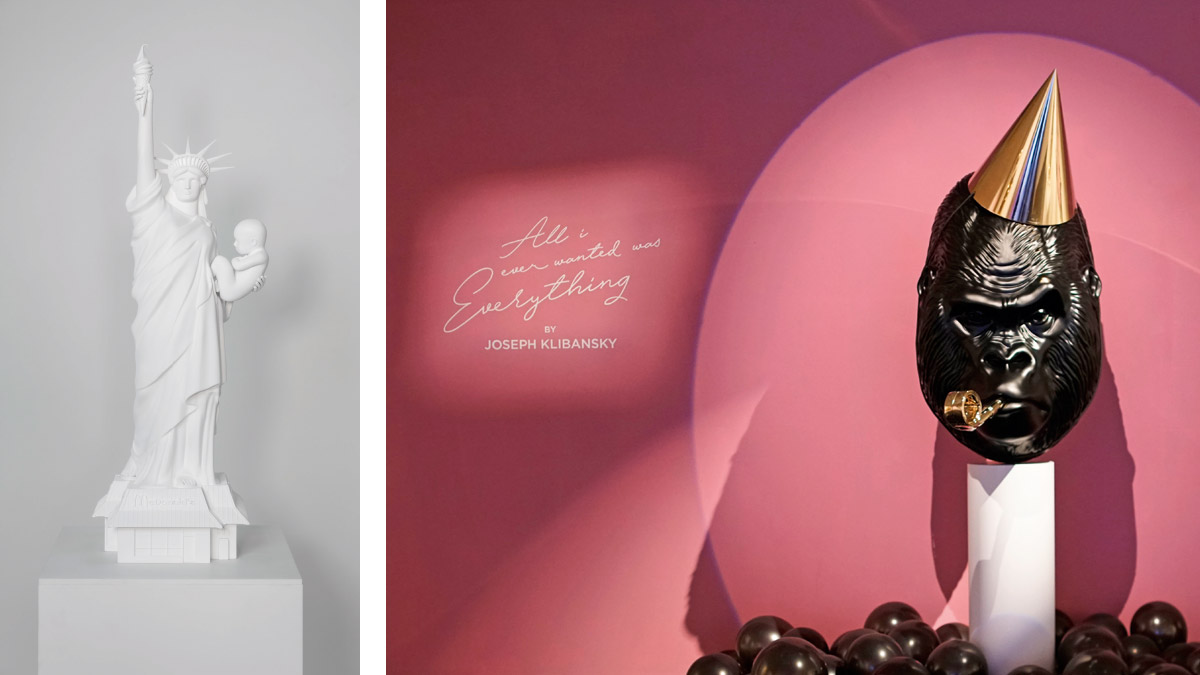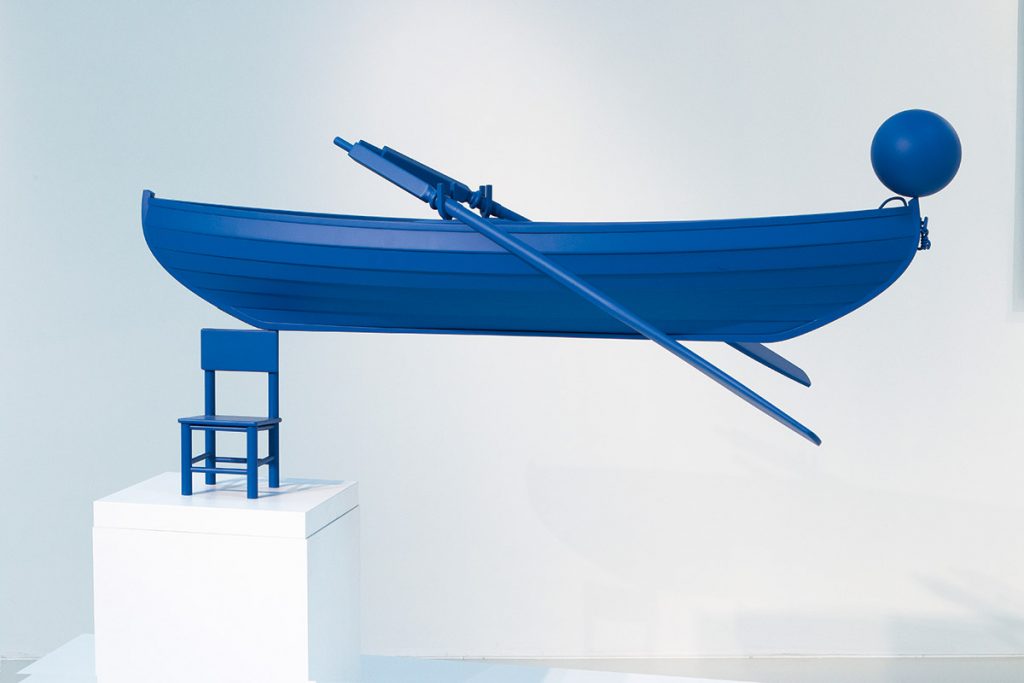“Nothing is as it seems, because it is exactly what you see.” The sentence is not of Joseph Klibansky, the rising star of contemporary art, but – more modestly – of the writer, seduced at first sight by an artist who, unlike many of his colleagues, does not choose the path of provocation and shock at all costs, but uses a lightening sense of humor to solicit a profound reflection and to arouse a good dose of sense of loss…
Joseph Klibansky is young, at that age between thirty and forty when technique has matured but has not yet taken over creativity, but rather allows it to enter into much greater depth in the reflection on the subjects portrayed, and the deeper message they veil beneath the surface.
Klibansky has already experimented with different techniques, ranging from computer art to painting and sculpture, and what seems very clear is the artist’s capacity to tackle both the urban landscape and its myriad multi-coloured details, as well as the solitude of the single individual, depicted in total-white portraits, always with the same level of intensity. And always with the same result: generating that mixed feeling of uneasy cheer.
 ▲ Reflections of Truth II (2016) – polished bronze
▲ Reflections of Truth II (2016) – polished bronze
Joseph Klibansky is South African born, but works and lives in Holland.
His early career was characterised by images, created on the computer, in which he overlays dozens of different photographs to create digital urban landscapes conceived with a dream-like imagery.
Later, Klibansky worked increasingly on painting, using acrylics and a variety of printing techniques and supports, which culminated in his latest sculptural productions in which digital projection techniques, bronze castings and industrial spray paint integrate giving rise to works like «The Thinker» or «Reflections of Truth».
These sculptures perhaps represent the stronger, sharper Klibansky, more irreverent toward our modern society, so concentrated on profit as to render everyone incapable seeing past the end of their own noses and narcissist to the extreme (Reflections of Truth), or alone and full of doubt (The Thinker).
But Klibansky’s strength is that these sensations emerge gradually, calmly in the mind of the observer. The first reaction is always a smile, a bit of fun.
The Pinocchio in «Reflections of Truth» raises a smile as he slips the engagement ring onto his nose, promising to be faithful to himself …making himself a promise he cannot keep precisely due to his mendacious nature.
The same Pinocchio, in «Reflections of Truth II» mirrors himself in the same diamond, now grown to disproportionate size, just like his ego. Pinocchio strides happy, unconscious of the fact that carrying such a heavy gem is costing him dear, and above all without looking where he’s going… risking to crash into a wall of solitude.
 ▲ The Thinker (2018) – bronze, spray paint
▲ The Thinker (2018) – bronze, spray paint
Or again, at first glance the astronaut in the «The Thinker», with his gold visor, sitting on a rock that’s gold as well, surrounded by nothing, in perfect isolation on the planet he went to conquer chasing who knows what dream of eternity …
The astronaut is also the subject of other sculptures, like «Self-portrait of a Dreamer», which fuses references to Van Gogh (chair, vase of flowers) and the ongoing description of impossible situations: the weightless astronaut floating in the air, but attached to a chair that unexplainably remains fixed to the ground …
In «Fishing in Spring» (2016) a boat seems to float in an empty space, but like the astronaut, it is actually supported by the back of a chair. The work is inspired on the Van Gogh painting of the same name from 1887. The sculpture’s blue colour evokes the water of the river, making the position of the boat seem normal. Here again, Klibansky is telling us that a thing and its image do not necessarily coincide.
As his official biography says: «Joseph Klibansky’s work examines the relationship between a thing and its essence, between what we see and what an image implies. The sense of precarious equilibrium that can be found in his recent paintings and in his sculptures reveals just how sadly dystopian can be an image that, at first glance, appears happily utopian. It thus reveals how utopia and dystopia can coexist within the same image.»
Personal judgement /criticism: Klibansky, my new hero.
 ▲ Left: Velvet Revolution (2016) – acrylic paint, stereolithography / Right: Big Bang (2016) – Bronze, Spray paint
▲ Left: Velvet Revolution (2016) – acrylic paint, stereolithography / Right: Big Bang (2016) – Bronze, Spray paint
HOFA GALLERY
House of Fine Art – HOFA Gallery specialises in contemporary art by established and emerging international artists. The House of Fine Art is agile on featuring a multitude of artistic disciplines with an intent focus on exceptional talent, diversity and cultural relevance.
Dedicated to supporting rare talent and making their work globally accessible, the gallery works closely with all of its artists to ensure the highest level of excellence and integrity across its locations in London, Los Angeles and Mykonos.
HOFA Gallery represents acclaimed painters, sculptors, photographers and multisciplinary artists from all over the world. Since its inceptionin 2014, HOFA Gallery has provided government institutions, museums, art galleries and private collectors access to some of the most sought after and collectable works of contemporary art.
With a unique selection of highly collectable artworks of appreciative value and an uncompromising dedication to art world innovation, the gallery is committed to its mission in cultural leadership. In 2018 HOFA Gallery was the first art gallery in the world to make their entire collection available in cryptocurrency. Using new technologies and digital innovations, HOFA pledges an accessible entry point to the market and inclusivity to art collectors on all levels.
JOSEPH KLIBANSKY – ALL I EVER WANTED WAS EVERYTHING: 26 MAY – 1 JUNE 2019
The House of Fine Art – HOFA Gallery London – 58 Maddox Street, Mayfair – London W1S 1AY
T: +44 (0) 207 193 2817 – info@thehouseoffineart.com – thehouseoffineart.com

